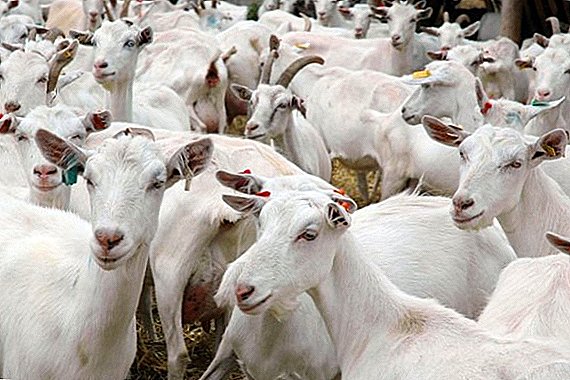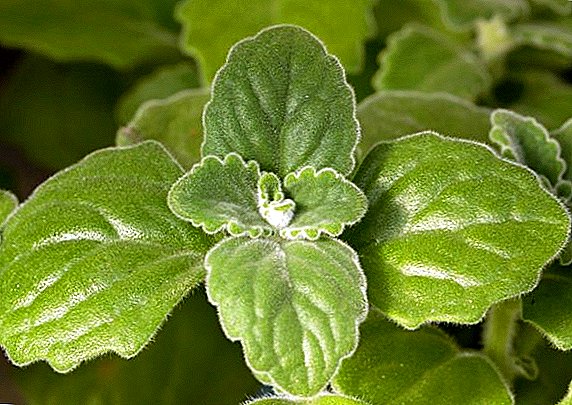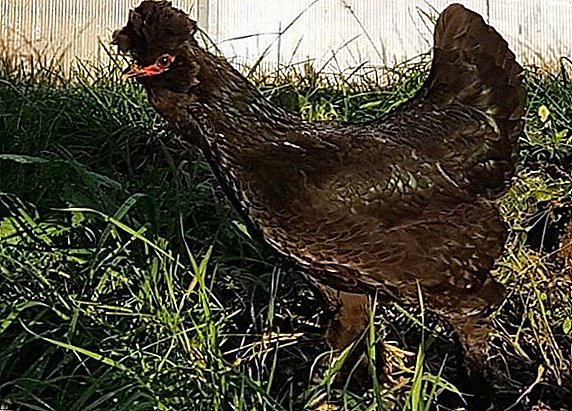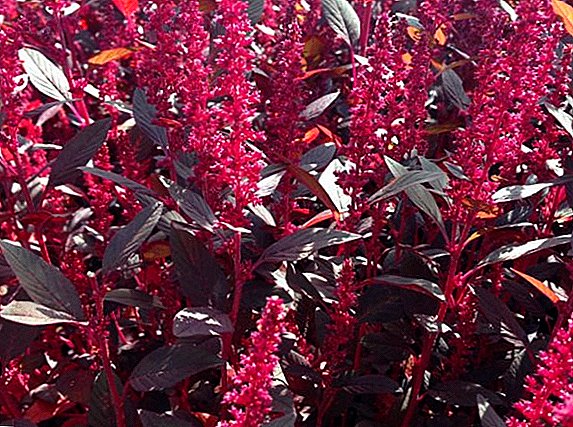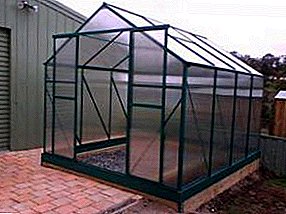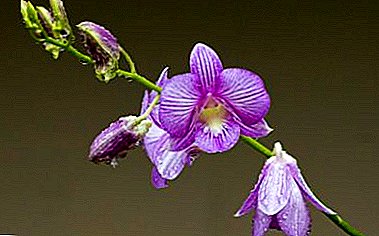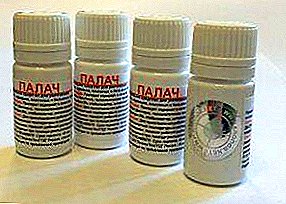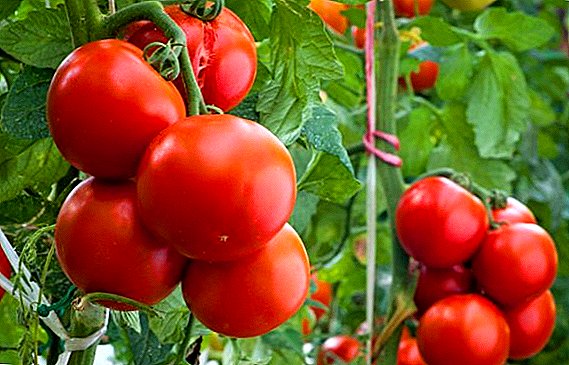 Varieties and hybrids of tomatoes are very diverse. Each vegetable grower can pick them up for planting according to his taste - some prefer large, fleshy fruits, others like small and sweet fruits, and someone is forced to choose the type of climatic conditions of their region. It is necessary to figure out how to choose tomatoes for planting in a greenhouse or in the open field, which species are the most productive and have excellent taste.
Varieties and hybrids of tomatoes are very diverse. Each vegetable grower can pick them up for planting according to his taste - some prefer large, fleshy fruits, others like small and sweet fruits, and someone is forced to choose the type of climatic conditions of their region. It is necessary to figure out how to choose tomatoes for planting in a greenhouse or in the open field, which species are the most productive and have excellent taste.
Criterias of choice
The choice of tomato varieties usually depends on a large number of factors: a place to plant, an open or protected ground, the taste of tomatoes, the purpose of cultivation (fresh use, pickling, preservation), shelf life of vegetables, resistance to diseases and much more.
Yield
High-yielding varieties of culture give more than 5 kg of vegetables from 1 square. m landing. Some hybrids grown for commercial purposes in greenhouses are capable of producing a crop of 20 kg of tomatoes from 1 meter of planting.  It is desirable that the total yield of tomatoes was initially large, because when planting crops in open ground, it will be significantly lower than in the greenhouse.
It is desirable that the total yield of tomatoes was initially large, because when planting crops in open ground, it will be significantly lower than in the greenhouse.
Check out the best varieties of tomatoes for different regions: Siberia, the Urals, the Moscow region, the Leningrad region.
To achieve a large crop on the open ground should be planted such varieties:
- "Anastasia" - mid-season tall bushes reaching 130 cm, with medium saturated red or burgundy fruits, up to 200 g. The yield of the species is 12 kg from 1 m of planting.
- "Diabolic" - compact, tall bushes, up to 120 cm, with bright red oblong berries weighing 140 g. The variety is well suited for transportation, winter preparations, it is not exposed to diseases. On an industrial scale, you can get up to 600 centners of tomatoes from 1 hectare of planting.
- "Waterfall" - tall bushes of early ripening period, have bright orange, dense, oblong fruits. With the observance of favorable growing conditions, the crop is up to 8 kg per 1 m of disembarkation.
- "Nastena F1" - tall early ripening hybrid, reaching 150 cm in height, with large fleshy red berries, up to 300 g. Resistant to low temperatures, high humidity and diseases. Productivity can reach 18 kg from 1 m of landing.
- "Raspberry Giant" - an early ripe grade with huge pink fruits, weighing up to 800 g. It is not subject to diseases and is steady against wreckers.





Important! It should be noted that the varieties with extraordinary yield do not have a strong aroma and special taste due to the fact that all the energy of these plants is aimed at the formation of a large number of fruits, and not the accumulation of nutritious fibers and sugars.
Size of fruits and bushes
The size of the fruit tomatoes can be divided into:
- very large (700-1000 g);
- large (300-500 g);
- medium;
- small;
- very small ("Cherry").
- "Bull's heart" - mid-season tomato, with fruits reaching 600 g, with sweet dense pulp.
- "St. Andrew's Surprise" - The height of the bush reaches 2 m. The variety is used for salads. Large raspberry berries grow up to 700 g, have juicy, fleshy pulp and a minimum number of seeds.
- "Miracle of the Earth" - elongated heart-shaped fruits with sweetish dense pulp, reach 500 g



- "Black Moor" - A hybrid of average maturity with small brown berries, reaching 50 g. Used for preservation.
- "Wonder of the World" - small, color and shape similar to lemon, tomatoes, weighing up to 100 g. The yield of one bush is 50 berries.
- "Tarasenko 2" - tall bushes that form massive brushes of small berries; about 35 fruits to 60 g each ripen on each cluster.



The height of the bush tomatoes can be divided into the following types:
- Determinant (bush undersized) - their height reaches up to 100 cm. Their advantage is that the bushes do not need tying and removal of excess shoots.
- Indeterminate (climbing tall) - grow to 2 m, while the bushes require the installation of supports and the formation of the bush. In turn, high varieties and hybrids are divided into the following types: standard (with dense compact bushes); non-standard (thin bushes that often fall under the weight, requiring the installation of a support).
- Medium or semi-determinant - can reach heights from 80 to 110 cm.

Ripening time
By the duration of ripening, tomatoes are divided into types:
- Early maturity - ripening period up to 100 days. Such tomatoes include varieties "Don Juan", "Oak", "Alpha", "White filling", "Valentine", "Amur shtamb".
- Mid-season - reach maturity by the 115th day. Common varieties: "Tsarevna", "Pink Elephant", "Akulina", "Hybrid 35", "Giant 5", "Volgograd".
- Late-ripening - 117–130 days are necessary for their maturation. These tomatoes are not particularly popular, but have a longer shelf life. These include "Wonder of the World", "De Barao", "Brown Sugar", "Titan".
- Ultra Early Hybrids - the most demanded type of tomatoes, ripening in just 70 days. Seeds of such varieties tolerate low temperatures down to frosts - “Far North”, “Nevsky”, “Sanka”, and “Little Red Riding Hood”.
Did you know? The tomato does not contain cholesterol, but incorporates a significant amount of fiber, vitamins A, C, pigment lycopene, not produced by the human body, and even the "happiness hormone" serotonin.
Disease and pest resistance
The most common and dangerous disease of tomatoes is late blight. Other diseases include the following diseases: brown spot, mosaic, gray rot, black leg, brown rot, cracking of fruits. To pests attacking tomatoes include medvedka, wireworms, caterpillars, scoops, whiteflies.  The preventive measures taken by gardeners to prevent diseases include:
The preventive measures taken by gardeners to prevent diseases include:
- seed treatment before growing seedlings with potassium permanganate;
- soil application of copper-containing preparations;
- full replacement of land in the greenhouse or a change of location for planting in the open field.
- "Bohemia" - srednerosly determinant hybrid with weighty fruits collected in brushes of 5 pieces. Productivity - up to 6 kg from a bush.
- "Blitz" - determinant species ripening for about 80 days. Resistant to late blight, tobacco mosaic, Fusarium, Septoria and necrosis.
- "Opera F1" - the early ripe hybrid reaching height to 1 m. Well transfers diseases: fitoftoroz, white spot, mosaic, fomoz, necrosis.
- Spartak F1 - indeterminate species with large fruits up to 200 g. The variety is resistant to cladosporia, blight, fusarium, mosaic, black leg.
- "Virtuoso F1" - indeterminantny grade resistant to sharp temperature fluctuations, changing lighting and greenhouse conditions. Tomatoes are resistant to late blight, root rot, fusarium, mosaic, cladosporia, and blackleg.




Shelf life
Only varieties containing the gene that inhibits maturation have a long shelf life. Most often these are late-ripening hybrids, which are bred for the purpose of good preservation. These tomatoes are harvested at the initial stage of ripening berries and acquiring a light brown color. They spice later, at an air temperature of 18 ° C.
Long-lived hybrids include:
- "Dominator", "Lazar", "Radical" - stored for more than 1 month;
- "Giraffe", "Farm Salt" - shelf life up to 4 months;
- "Lazybok", "New Year", "Long Kiper" - does not lose its taste until January next year.
Important! Tomatoes of long storage have dense peel, pronounced aroma and taste. This is due to the fact that the process of their ripening takes place in an artificial environment.
Growing conditions
Of particular importance is the adaptability of tomatoes to climatic conditions. Planted in the northern regions of tomatoes, which are adapted to the southern climate, will not be able to give proper yield, and vice versa.
However, more and more breeders produce universal varieties that can bear fruit in any climatic conditions.
The best types of tomatoes for growing in greenhouses:
- "Pink Raisin" - high-yielding variety of early ripening, often used for conservation. Multipartum brush covered with smooth, elongated, pink fruits.
- "Banana legs" - high yield tomato, unusual oblong shape with a sharp end and sweet fleshy pulp. The height of the bush does not exceed 60 cm. The fruits have a unique taste when salting, are also used in the preparation of sauces and salads.
- "Pink Angel" - ultraearly undersized variety that does not need a stepchild. Pink fruit tastes sweet. Used for making salads.
- "Renet" - low-growing shrub up to 40 cm tall, but very fruitful and precocious. Not picky in weather conditions. Fruit weight reaches 100 g.




For growing in greenhouses, the following varieties are also well suited: Sugar Bison, Maryina Roshcha, Mikado Rosy, Raspberry Miracle, Pink Honey, Bely Pouring, Verlioka Plus, Red Guard, Cardinal. "
Varieties suitable for outdoor use:
- "Roma" - determinant shrub up to 60 cm. The fruits of the original oblong shape, bright red, fleshy and sweet. Perfectly is suitable both for salting, and for the use in fresh look.
- "Anastasia" - A hybrid view with large, very tasty red fruits, reaching 200 g. Resistant to diseases and unpretentious in care.
- "Waterfall" - the early ripe bush, grows to 100 cm. Plentifully fructifies small red berries. Use for salting or canning.


Did you know? Translated from the Italian word "tomato" means "golden apple". In France, the vegetable is called the "apple of love", and in Germany - "paradise apple".
The best varieties of tomatoes
It is not easy to make a general ranking of the best tomatoes, given that more than 7,500 types of vegetables are cultivated today, and the number of varieties and hybrids is increasing year by year.
Indeterminate (climbing) tomatoes
Climbing tomatoes are very popular because of their high yields and rapid growth. The most common representatives are:
- "De Barao" - a high 2-meter bush, which has a huge yield. Medium sized fruits are very juicy and fleshy.
- "Admiral" - the most common, quickly ripening tomato, widely used for both salads and for preservation.
- "Dandy" - the hybrid suitable for cultivation in an open ground and in the greenhouse. It tolerates a cold climate.
- The Scarlet Mustang - tall shrub with small (300 g), juicy, tonkoshkurimi fruits.
- "Commissioner" - A hybrid with a high crown, small berries. Resistant to all types of diseases.




Semi-determinant Tomatoes
Typically, these types of vegetables are characterized by good resistance to diseases and temperature instabilities.
Semideterminant hybrids are widespread:
- "Magnus F1" - mid-early fruit of flat-rounded shape of bright red color and weighing up to 160 g. Used for preservation and salads.
- "Hlynovsky F1" - large-fruited bush with fleshy red berries, reaching 220 g
- "Baron F1" - a hybrid of early ripening, having red flat-rounded fruits up to 140 g with a wonderful taste.
- "Gunin F1" - the early ripe grade giving very tasty red berries weighing up to 120 g
- "Red Arrow F1" - mild-leaf hybrid, well-tolerated shading. Early fruits weighing up to 120 g perfectly amenable to transportation.



Did you know? The world community has a large number of disputes over the biological definition of tomatoes. Botany classifies them as berries, the US Supreme Court decided in 1893 to call them vegetables, and in 2001 the European Union decided to classify tomatoes as fruits.
Determinant (bush) tomatoes
The early ripe fruits yielding a fine harvest. The most popular representatives of the species are:
- "Dubko" - early ripe, resistant to late blight, giving bright red fruit with a pleasant sweetish taste.
- "Honey cream" - differs in storage time. The fruits are in the form of plums, have excellent taste, ideal for preservation.
- "Sanka" - ultra early hybrid with small bushes reaching a height of only 40 cm. The fruits are round, bright red.
- "Bagheera F1" - an early hybrid with large berries to 220 g. It is used in any processing. Well tolerated transportation.
- "Rio Grande" - abundantly productive, wide shrub, up to 60 cm high, with even small fruits of elongated shape. Suitable for canning, and for any kind of processing.







